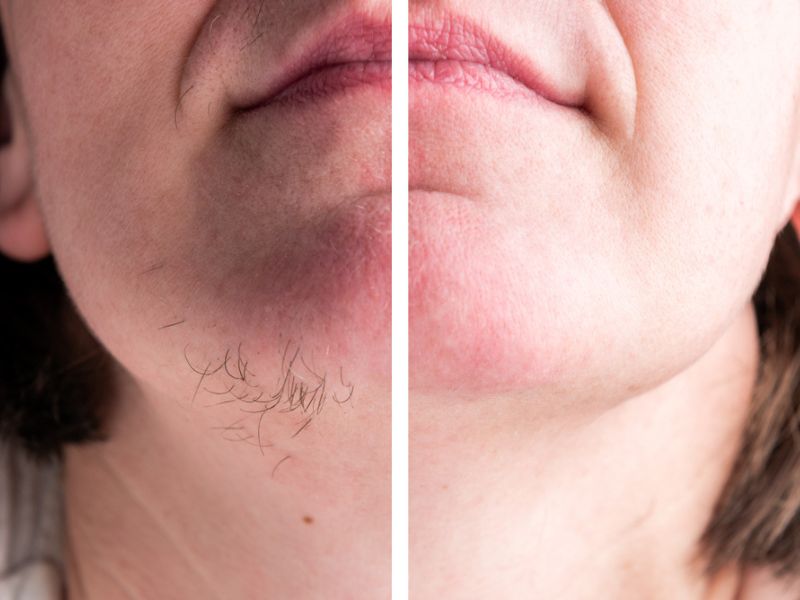As you age, you may have noticed an unwelcome addition to your beauty routine: crazy chin hairs. These wiry, coarse strands seem to sprout up out of nowhere, often in the most inconvenient places. But what causes these chin hairs to appear, and why do they become more prevalent as you get older? Let’s delve into the fascinating world of chin hairs and explore the reasons behind their growth.

Image Credit: Shutterstock/Natallia Ploskaya
Hormonal Changes
One of the primary culprits behind the emergence of chin hairs in aging individuals is hormonal changes. As you get older, especially during menopause for women and andropause for men, hormonal fluctuations occur. These changes can lead to an increase in androgens, such as testosterone, which stimulates hair growth. Unfortunately, these hormonal imbalances can cause hair follicles to become more sensitive to testosterone, resulting in thicker, darker chin hair growth.
Decreased Estrogen
Estrogen plays a crucial role in maintaining the balance between hair growth and hair loss. When estrogen levels decline, the relative increase in androgens can promote unwanted facial hair growth, including chin hairs. For women, the decrease in estrogen levels during menopause contributes to the development of chin hairs.
Genetic Predisposition
If your family members, particularly your parents or grandparents, have experienced chin hair growth, there’s a higher likelihood that you may also share it. Genetic factors can influence the sensitivity of hair follicles to hormonal changes and determine the rate and extent of hair growth. Your genetic makeup also plays a role in deciding whether you’ll develop crazy chin hairs as you age.

Image Credit: Shutterstock/Andrey_Popov
Aging Hair Follicles
As you age, the hair follicles on your chin may undergo structural changes. These follicles can become larger and produce thicker, coarser hairs. Additionally, the natural process of aging causes a decrease in the production of melanin, the pigment responsible for hair color. As a result, chin hairs may appear gray or white, making them more noticeable against your skin.